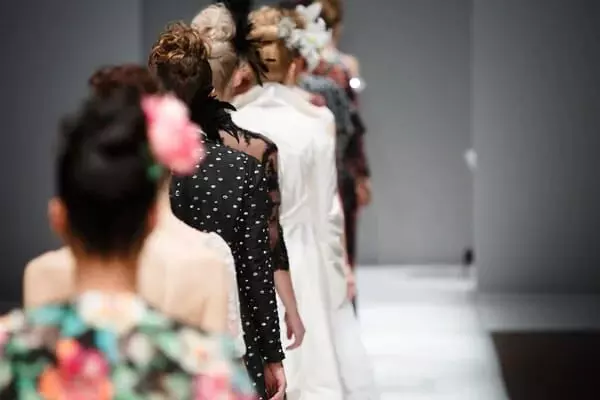Runway to success
In the past, fashion design was met with parental reservations. Today, it encompasses a multitude of career opportunities within the industry

From Anushka Sharma, Priyanka Chopra to Deepika Padukone, Sabyasachi Mukherjee’s wedding lehengas have etched themselves into Bollywood’s history. Yet, as Coco Chanel said, “Fashion is not something that exists in dresses only. Fashion is in the sky, in the street. Fashion has to do with ideas, the way we live, what is happening.” Sabyasachi not only graces Bollywood’s stars with his designs but seamlessly marries heritage, self-expression, history, and culture in his work. His recent venture into crafting sustainable ‘shola masks’ for King Charles III and Queen Camilla at the Animal Ball 2023 in London is a vivid example.
Until a few years ago, fashion designing wasn’t a career parents readily supported. But today, fashion designers have diverse roles, serving high-profile clients, creating clothes for the masses, and working in areas like footwear, sportswear, and eco-fashion. They collaborate with manufacturers, operate in design teams, and even establish their brands or work as consultants. The global fashion industry is now worth $1.7 trillion in 2023.
Let’s take the example of Disha Ghosh. She was a science student, and her engineer father expected her to follow his path. However, Disha had different aspirations. She enrolled at the National Institute of Fashion Technology (NIFT) in Delhi, and pursued Master of Fashion Technology. Today, she works for a popular fashion house.
Leading fashion designer Abhishek Dutta believes India’s fashion scene has changed significantly in the last decade. He started his journey as a science graduate and later studied Fashion Design and Technology from Wigan & Leigh College. “Today, fashion is seen as a respected profession, but it wasn’t the case 20 years ago when I began. Many parents were hesitant to let their children pursue fashion design back then. Now, it’s one of the most sought-after careers among youngsters,” said the Kolkata-based designer who idolises fashion legend Alexander McQueen.
However, Dutta also points out that excelling in fashion isn’t just about an interest in clothing. He stresses the importance of a solid education, including a background in subjects like mathematics, which is essential for measurements and calculations in fashion. “Science also plays a crucial role in textile innovation,” said Dutta, whose sustainable clothing brand, Parole, is produced by both male and female prisoners.
During Durga Puja this year, almost every actor in the Bengali film and TV industry wore Abhisek Roy’s festive menswear collection from his label, Bohurupi Santiniketan. He’s even designed sarees for Goddess Durga at the Ahiritola Jubak Brinda Puja this year. Roy, who studied textile design in Santiniketan, emphasises basic education, particularly for the long term. According to him, customisation and sustainability have taken the forefront in the fashion industry now. Roy recalled that 17 years ago, when he studied textile engineering, most job opportunities were in government jobs and mills. “Nowadays, there are numerous career options, including manufacturing, apparel, and merchandising. People have become more fashion-conscious and aware of various concepts, which have led to the industry’s rapid growth,” said Roy, a great admirer of Sabyasachi.
In India, there are several top institutions like NIFT, Pearl Academy, MIT Art, Design and Technology University, and more that offer a range of fashion-related courses. These courses cover areas such as fashion and apparel design, fashion business and retail management, lifestyle and accessories design, knitwear design, footwear design, fashion communication, and accessory design. Students who have completed their Class 12 from any discipline, be it Science, Commerce, or Humanities, can pursue undergraduate fashion design programmes. Many institutes also provide online certificate courses in sustainable fashion, digital pattern making, and branding for those interested in these specific aspects of the fashion industry.
“Technology lead interventions are changing how fashion is perceived. Garments that shift shape, form, and colour can question the need to buy more, while 3D-printed casts can blur the lines between medicine and accessories. To look beyond the cycle of production and consumption would be the true impact of technological advancements in this industry,” said Mudita Pasari, Academic Dean, The Design Village, which offers fashion and textile design courses.
Pasari informed that fashion technology is a field which has large scope to create an immeasurable impact on lives. “Imagine making textiles or garments that respond to outside temperatures, others that grow with the user and some which provide much-needed lumbar support while we are at our desk jobs. As soon as we start seeing the applications of fashion beyond the only ‘beautiful’, we will be able to access the umpteen life-changing possibilities of this discipline,” said the academic dean.
There are many career options beyond just becoming a fashion designer. One can explore fields like accessory design, textile design, fashion styling, and fashion journalism. Remember Anne Hathaway’s role as an assistant to Runway magazine’s editor-in-chief, Miranda Priestly (played by Meryl Streep), in ‘The Devil Wears Prada.’ Interestingly, this movie was based on a book penned by a former assistant of Vogue’s Anna Wintour. From careers like retail buyer, fashion stylist, textile designer, personal shopper, makeup artist, model, photographer, fashion journalist, to influencer, there are various exciting paths to explore within the fashion world. For example, Delhi-based fashion influencer Komal Pandey, who pursued a career in CA, found her true passion in fashion blogging. Today, with 2 million followers on Instagram, she’s one of India’s most popular content creators, illustrating the ever-evolving and diverse opportunities in the fashion industry.
In the fashion world, change is constant. What’s in vogue today may quickly become passé. So, the key is to keep innovating and dreaming. Just like fashion icon Ralph Lauren said, “I don’t design clothes. I design dreams.”



